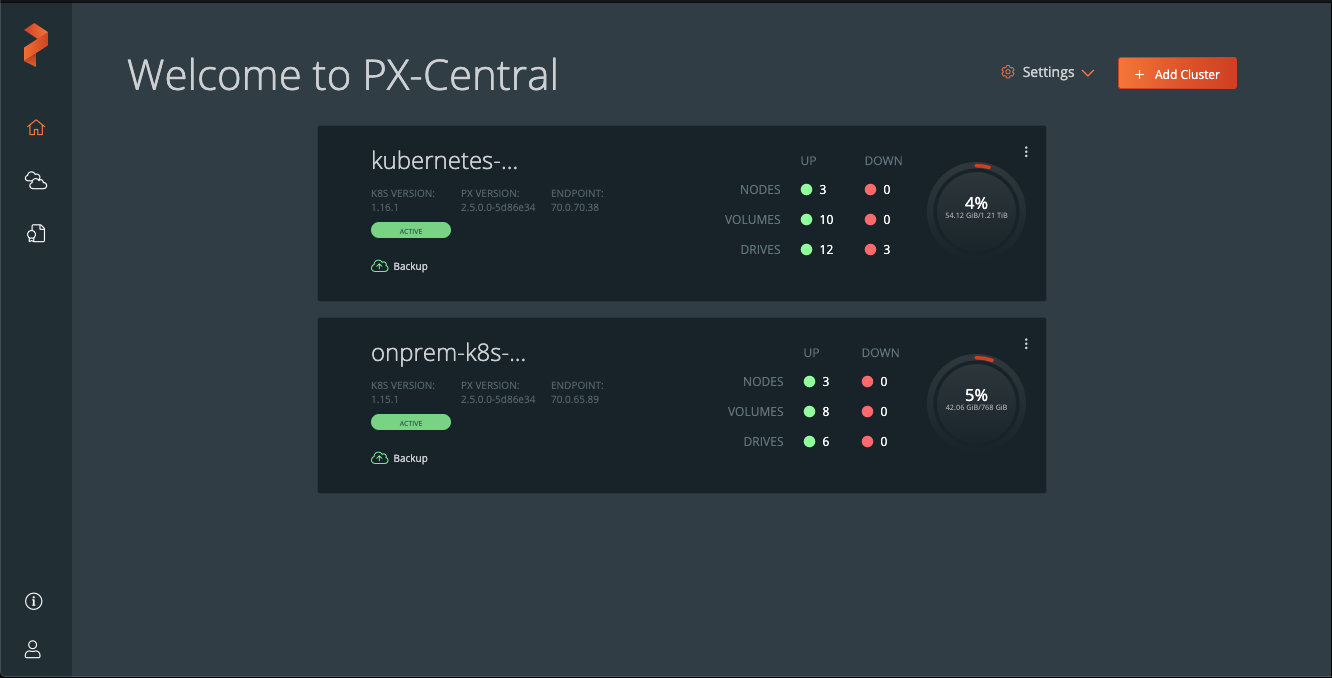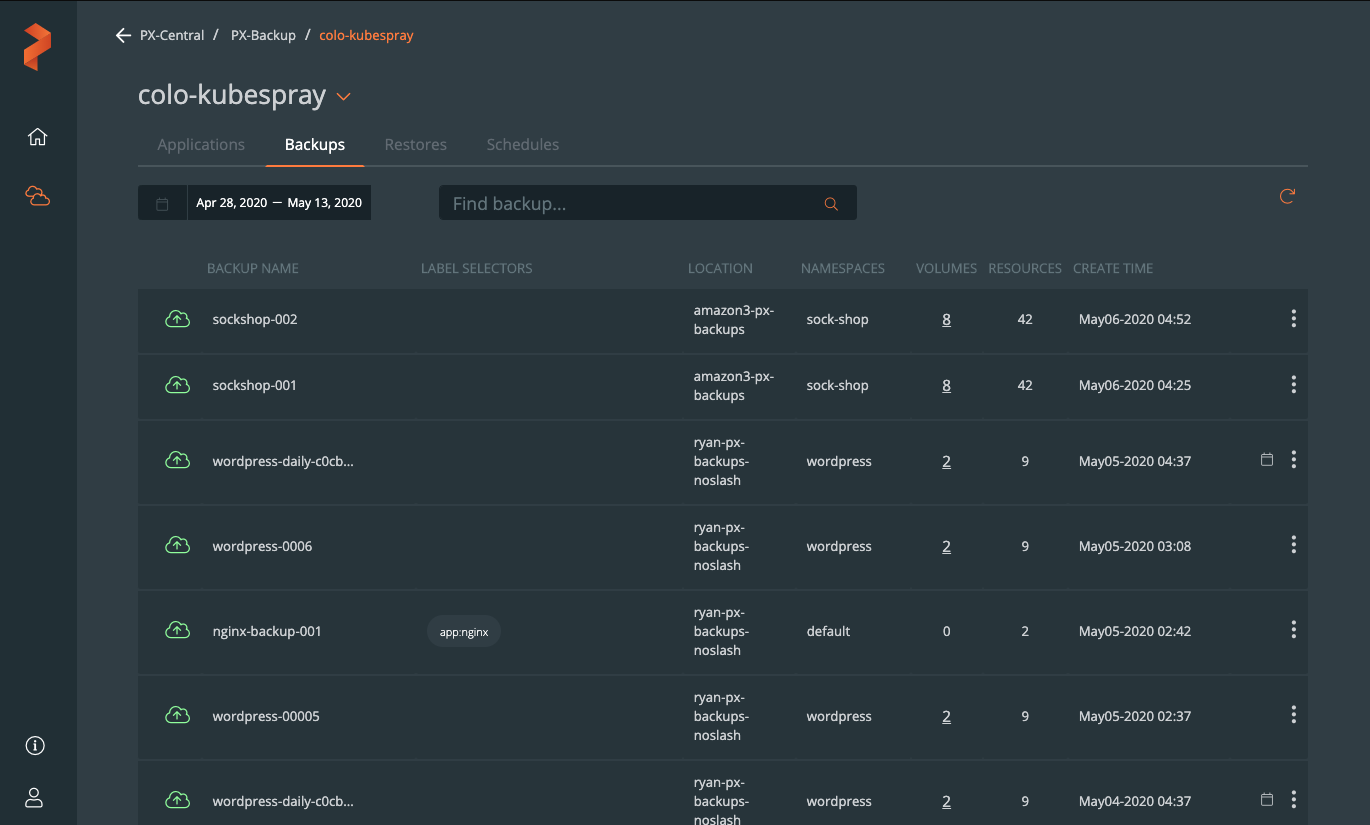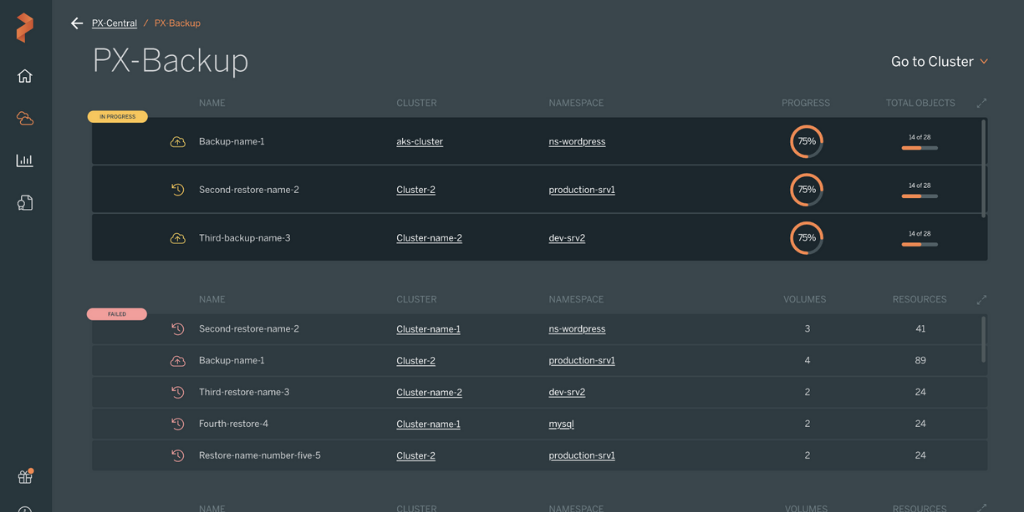
Backups are crucial; this is a fact. Often, backup procedures need their own runbook and planning because they’re too complex, but this should not be the case. Backups should be simple to configure and control. This is true for simple traditional applications as well as with Kuberentes where application deployments are, in fact, generally more complex due to the large number of pods, resources, and dependencies they contain. The complexity of Kubernetes is all the more reason to have a seamless and easy to use tool for backup and restore.
When taking a Kubernetes backup, at minimum it is essential to
- Backup Kubernetes objects and resources, such as PVCs, secrets, custom resource definitions, etc.
- Backup data stored in volumes if the application is stateful
- Target an entire namespace or a group of pods within the namespace
We’re going to show you how PX-Backup makes it simple to take backups of your stateful or stateless applications on Kubernetes.
> To install PX-Backup, please follow the docucmentation on how to install PX-Backup or visit central.portworx.com and click “Install & run,” then “new spec” to get the PX-Backup installer.
Once your PX-Central dashboard is up and running, you may add, view, and manage various Kubernetes clusters from its dashboard. When Users and Admins login, they will have access to only their specific backup configurations, clusters, backups, and restores. This helps backup and restore remain partitioned and secure for different groups of users and teams.
Kubernetes clusters are added to PX-Central by providing the access information in the form of a kubeconfig file along with an optional Portworx endpoint if you are using Portworx Enterprise storage for your persistent volume claims.

PX-Backup can be accessed by selecting the “Backup” icon below each cluster within the PX-Central dashboard.

You will be brought to a screen where you can select from Applications, Backups, Restores, and Schedules. When creating a backup, you will start at the Applications view and select the namespace or namespaces along with any specific tags of applications and resources you are looking to backup.

Once namespaces or resources filtered by tag are selected, users and admins can create backups as one-off jobs or places on a schedule. Users can also apply pre and post rules that define some action to be taken on the application(s) before and after the backup occurs. One example of a pre rule would be flushing data to disk.
To help understand what you can do with PX-Backup, the table below outlines some of the major features and functionality.
| Feature | Description |
| Multi-user management | Support for multiple users with isolated views |
| Multi-Cloud Multi-cluster management | Support for many clusters across any cloud |
| Air-gapped installation | Can be installed behind firewall |
| Backup locations | Supports AWS, Google, and Azure objects storage as well as S3 compatible storage endpoints. |
| Backups | Backup of stateful or stateless applications and namespaces |
| Restores | Restore of stateful or stateless applications and namespaces |
| Rules | Pre and post rules allow arbitrary or data service-specific commands to be run before and after backup or restores occur. |
| Schedule policies | Allows backup on a schedule or “policy” for automated backups. These can be paused and resumed. |
| Block storage providers | PX-Backup can be used with or without Portworx Storage. PX-Backup supports Amazon EBS, Google Persistent Disk, Azure Managed Disks, and Portworx PX-Store. |
| Stateful or stateless | Backup and restores can include applications with or without PVs and PVCs. |
Hopefully this list helps you understand the overall features provided by PX-Backup as of the publication of this blog post. To provide some more detail on these subjects, please take a look at the videos below that explain how to configure and how to use PX-Backup on prem and in the cloud.
Share
Subscribe for Updates
About Us
Portworx is the leader in cloud native storage for containers.
Thanks for subscribing!

Ryan Wallner
Portworx | Technical Marketing Manager
PX-Backup: The easiest way to backup and restore all your Kubernetes applications





